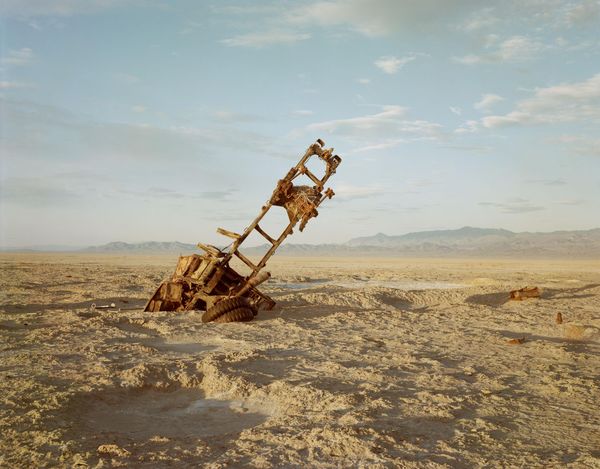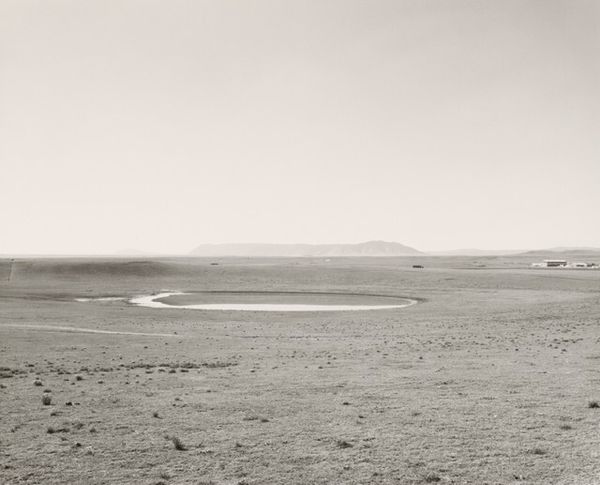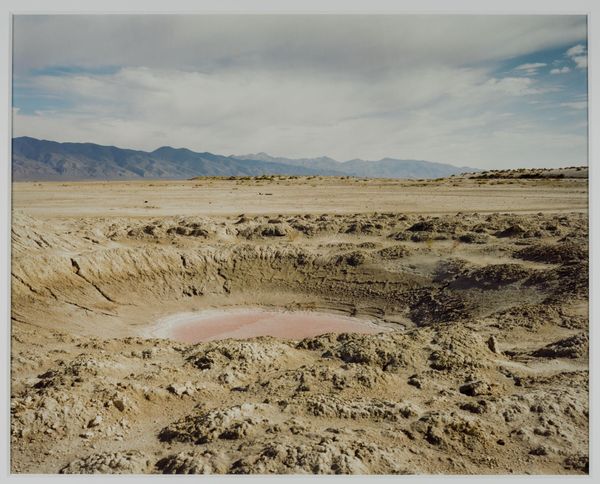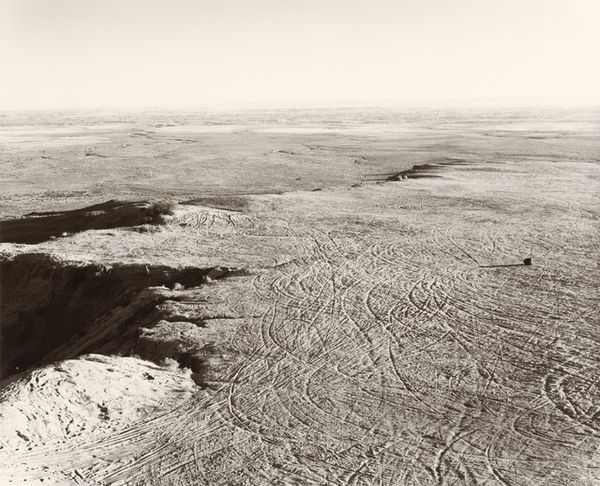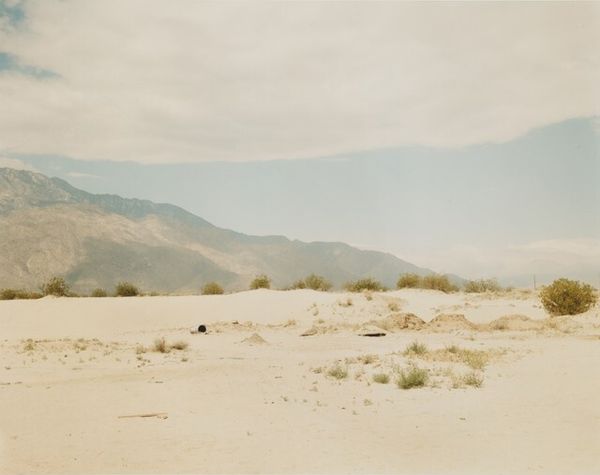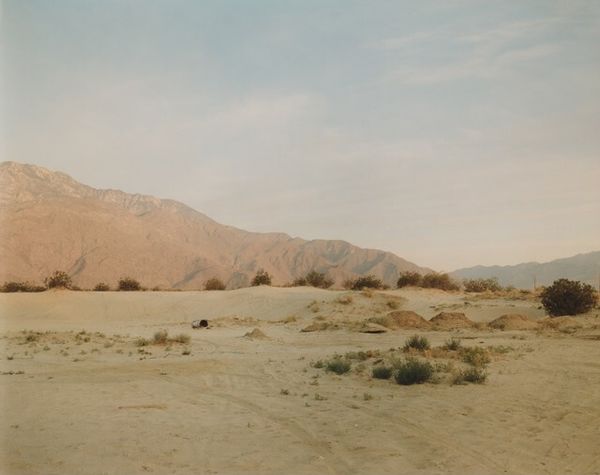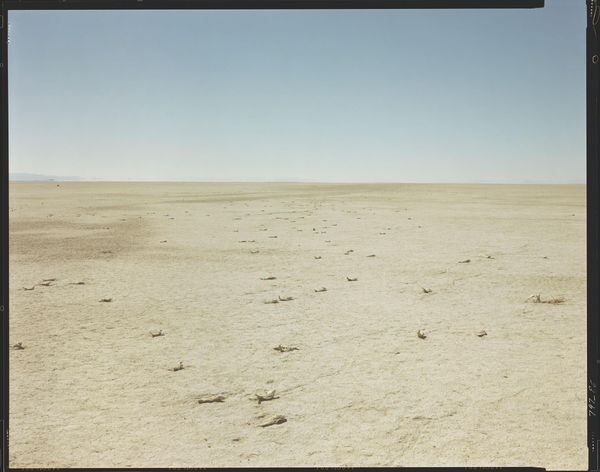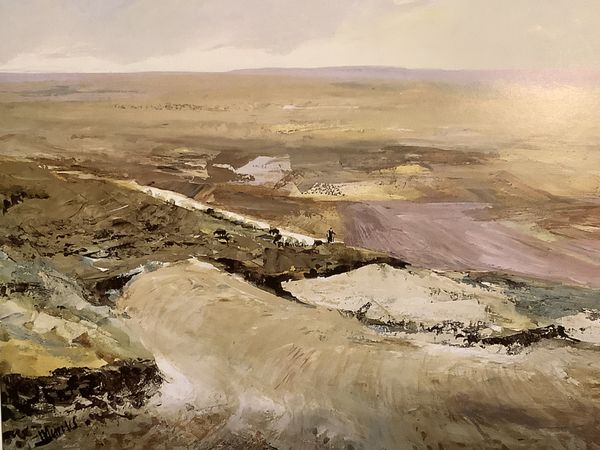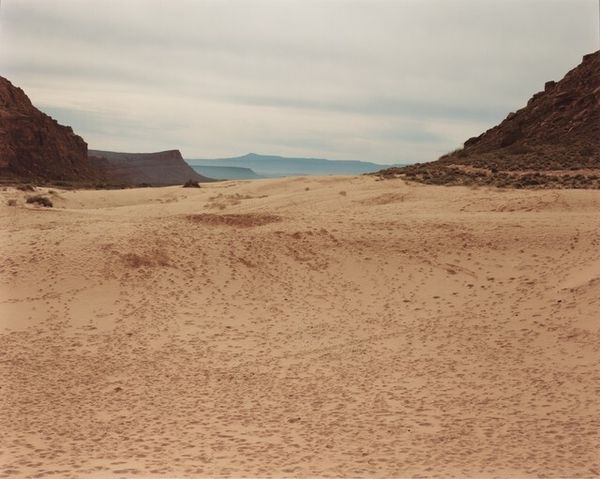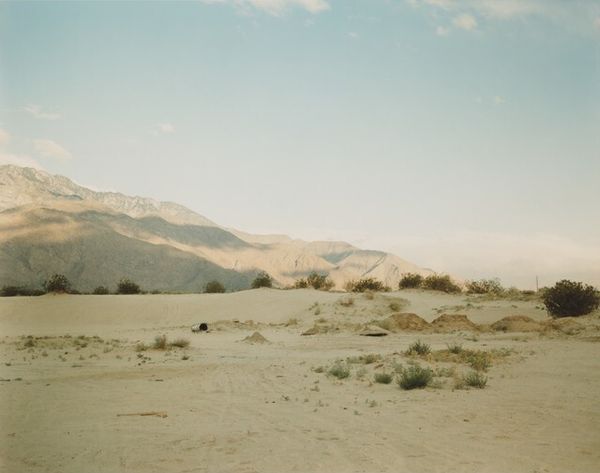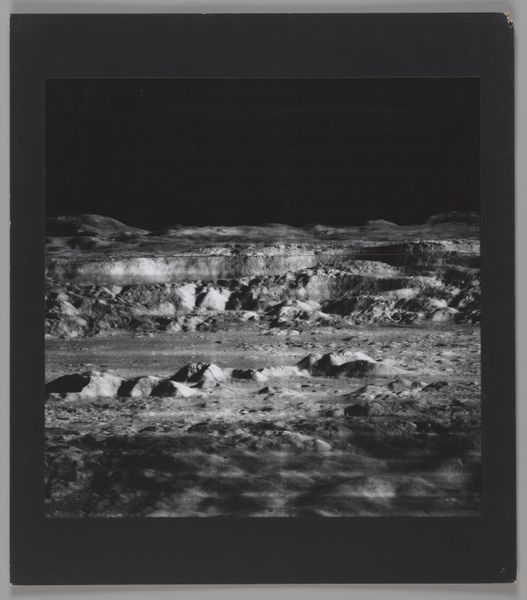
Bomb, Destroyed Vehicles, and Lone Rock, Bravo 20 Bombing Range, Nevada Possibly 1987 - 1992
0:00
0:00
Dimensions: sheet: 101.7 x 126.6 cm (40 1/16 x 49 13/16 in.)
Copyright: National Gallery of Art: CC0 1.0
Curator: This photograph, potentially taken between 1987 and 1992, is titled "Bomb, Destroyed Vehicles, and Lone Rock, Bravo 20 Bombing Range, Nevada" by Richard Misrach. It is a C-print, a type of color photography. Editor: It feels strangely serene despite its subject matter. The warm, almost sepia tones and the vastness of the landscape create a sense of desolation, but also a kind of haunting beauty. The composition is quite striking, with the subtle horizon line dividing the frame. Curator: Precisely. The muted palette lends the scene a certain detachment, obscuring the violence implied by the title. The photograph possesses a structured visual paradox – a bleak landscape harboring both destruction and sublime aesthetics. Notice how Misrach uses color to aestheticize decay. Editor: I agree. Context is key here. The Bravo 20 Bombing Range was a site of military practice. Misrach's photographs of these landscapes serve as a stark reminder of human impact on the environment. They speak to a history of conflict and exploitation of natural resources. It reflects on the political nature of landscape photography, don't you think? Curator: Yes, Misrach consciously employs compositional strategies that subtly undermine traditional landscape photography. Note the flat horizon and minimal depth of field; this visually flattens the pictorial space. The inclusion of the rusted vehicle remains challenges our notion of pictorial space. We are not supposed to find them beautiful, but we do. It almost verges on pop-art with the repetitive elements and commentary on capitalist detritus. Editor: It definitely pushes the boundaries of what constitutes a landscape photograph. There’s an element of institutional critique too, in showcasing the results of governmental or military action within this space. It acts as a counter-narrative. Curator: Indeed. And by using the conventions of landscape photography, Misrach creates a critical commentary, transforming this zone of military operations into a space of profound, albeit unsettling, beauty. The C-print medium, normally used for consumer-level snapshots, gains new layers of significance. Editor: Considering Misrach’s earlier series on the desert, one can consider the recurring visual vocabulary within his diverse collection and how he sought to subvert romantic conceptions of the frontier and wilderness that were popular at the time. It asks who the land belongs to. Curator: Looking closely allows one to decipher formal and political aspects, showing how such seemingly opposing principles can converge. Editor: And how a single image can carry layers of social, political, and art-historical resonance, and can remind us about land use and militarism in America.
Comments
No comments
Be the first to comment and join the conversation on the ultimate creative platform.
